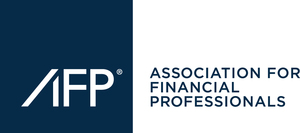Poised to Invest Sidelined Cash, Companies Differ on How to Measure Cost of Capital, AFP Study Shows
Evaluation of strategic investments is still more an art than a science, but can have a significant impact on the success of an organization
WASHINGTON, March 9, 2011 /PRNewswire/ -- As economic confidence increases and as uncertainty about financial regulation abates, it is only a matter of time before CEOs and boards of directors face pressure to invest the cash that they have been holding on the sidelines. Deciding where to make strategic investments will be an important first step.
The methods that financial professionals typically use to assess the future performance of strategic investments form the basis of a new study, Current Trends in Estimating and Applying the Cost of Capital, released today by the Association for Financial Professionals (AFP). Despite the importance of understanding whether the present value of cash flows from those investments will exceed their cost, the AFP survey found little consensus among executives as to how to make evaluations.
"Decisions about strategic investments can define the future of the company," said Jim Kaitz, president and CEO of AFP. "We believe we have produced a unique core of information that will help advance cost of capital evaluation from the art it is today to the science that it needs to become."
As many companies know, good project selection can set the stage for long-term advantages, including revenue growth, expense reduction, productivity enhancements, and product innovations. Investing in projects that do not generate economic value can erode the competitiveness and profitability of a company quickly and materially.
AFP survey respondents showed little agreement on what constitutes the "right" approach to cash flow forecasting and estimating the cost of capital used in project valuation. While most companies say they use discounted cash flow techniques (79 percent of all companies, 91 percent of large companies), there is less consistency in the ways organizations estimate cash flows and determine the weighted average cost of capital (WACC) at which those cash flows are discounted.
Discounted cash flow (DCF) techniques are used to evaluate projects and investments by more than 80 percent of organizations responding. Large organizations (91 percent) and publicly traded organizations (89 percent) show an even stronger preference for DCF techniques.
ESTIMATING RISK FREE RATE
The selection of the instrument to be used for determining the rate on a risk-free instrument is critical to calculating the cost of equity using the capital asset pricing model (CAPM). By a wide margin, the 10-year Treasury note (or other sovereign instrument) is the most commonly used instrument (46 percent). One out of six organizations chooses either a longer maturity financial instrument (e.g., 20-year and 30-year Treasury bond), something between a one-year and five-year Treasury, or a far shorter maturity Treasury bill. Large organizations and those that are privately held are more likely to use shorter-term Treasury or sovereign securities when estimating the risk-free rate.
Nearly half of respondents use the current interest rate on the preferred financial instrument to determine the risk-free rate, the AFP survey found. Just over a third remove some of the volatility from the interest rate by using the average rate of the selected instrument over some period rather than the current rate. Among respondents, however, 14 percent use forward curves to forecast the rate on the preferred financial instrument. Large organizations are more likely than smaller organizations to use the current rate on the preferred financial instrument when estimating the risk-free rate.
Most organizations — more than three-quarters — do not impose either a cap or floor on the risk-free rate used to evaluate projects and investments.
The study also provides detailed analysis on the techniques used for project and investment valuation, the typical length of forecasts, the number of scenarios used when modeling, the tax rate applied, and the sources of Beta. In addition, the survey respondents addressed the Market-risk premium used, the method for determining the Hurdle rate, the method used for International investments and the cost of capital when valuing an acquisition.
ABOUT THE SURVEY
In 2010, AFP was approached by a large public company to research cost of capital evaluation methods, using AFP members as a representative cross-section of corporate finance departments in America. The initial research, conducted in October of 2010, generated 309 responses from corporate finance professionals with senior-level job titles including CFO, Treasurer, VP of Finance and Assistant Treasurer. The typical survey respondent works for an organization with annual revenues of $1.9 billion, with the largest percentage of respondents employed in manufacturing. AFP believes this survey is the first step of an evolution in understanding best practices in cost of capital determination.
Download AFP's recent study, Current Trends in Estimating and Applying the Cost of Capital, on www.afponline.org/FPA
ABOUT AFP®
The Association for Financial Professionals (www.afponline.org) serves a network of more than 16,000 treasury and finance professionals. Headquartered outside Washington, DC, AFP provides members with news, economic research and data, treasury certification programs, networking events, financial analytical tools, training, and public policy representation to legislators and regulators.
AFP's global reach extends to over 150,000 treasury and financial professionals worldwide, including AFP of Canada; London-based gtnews, an on-line resource for the treasury and finance community; and bobsguide, a financial IT solutions network.
SOURCE Association for Financial Professionals
WANT YOUR COMPANY'S NEWS FEATURED ON PRNEWSWIRE.COM?
Newsrooms &
Influencers
Digital Media
Outlets
Journalists
Opted In




Share this article